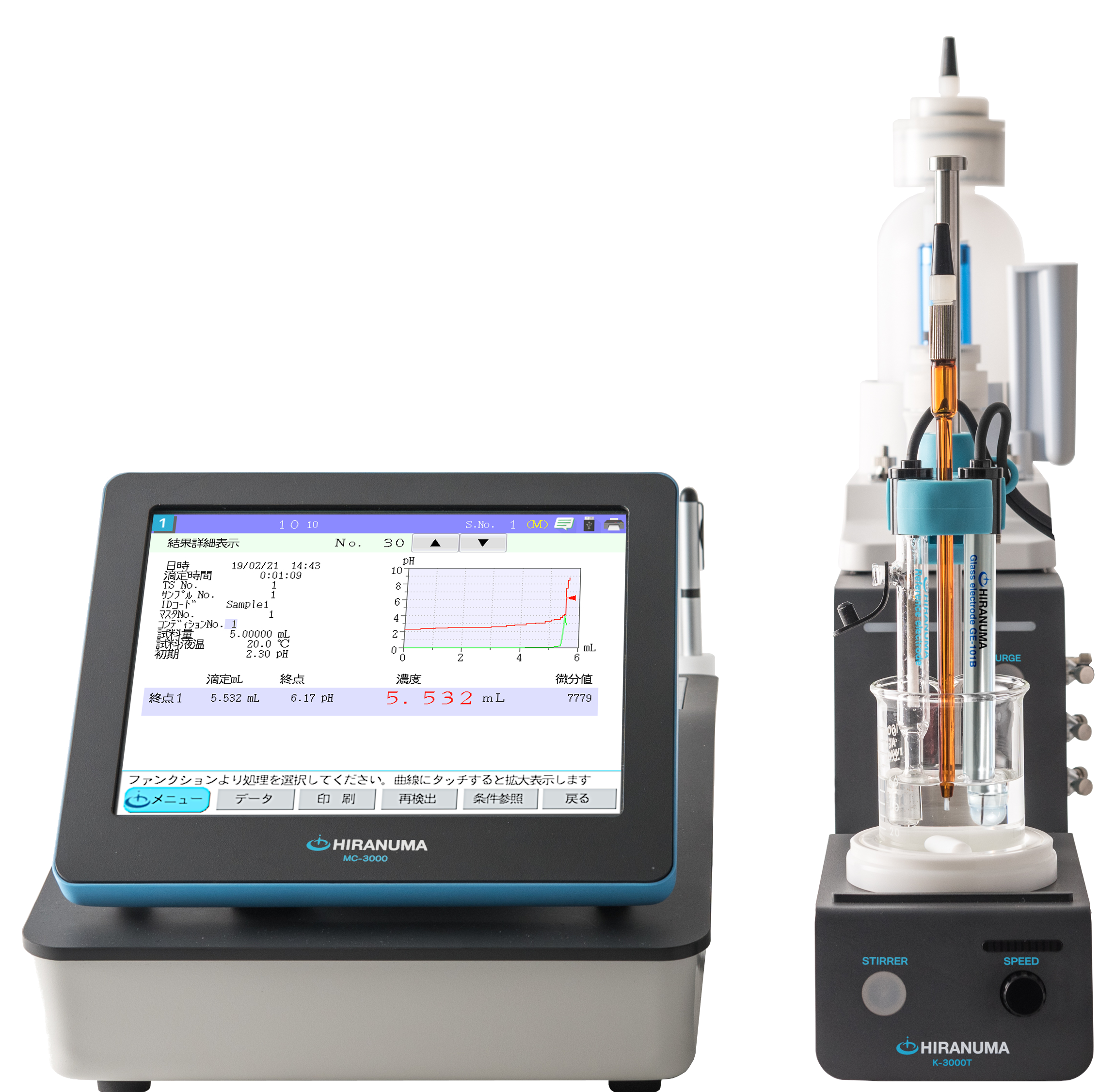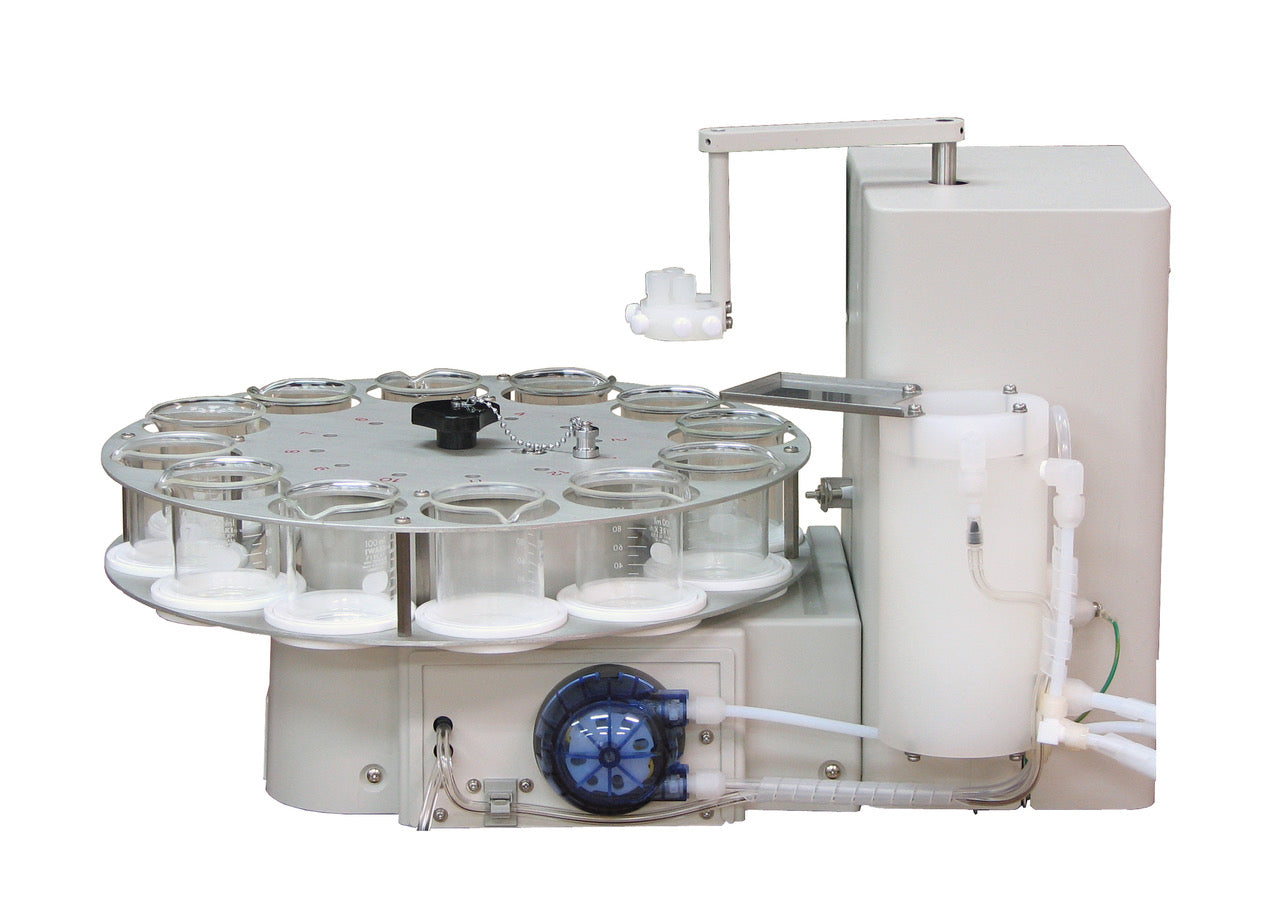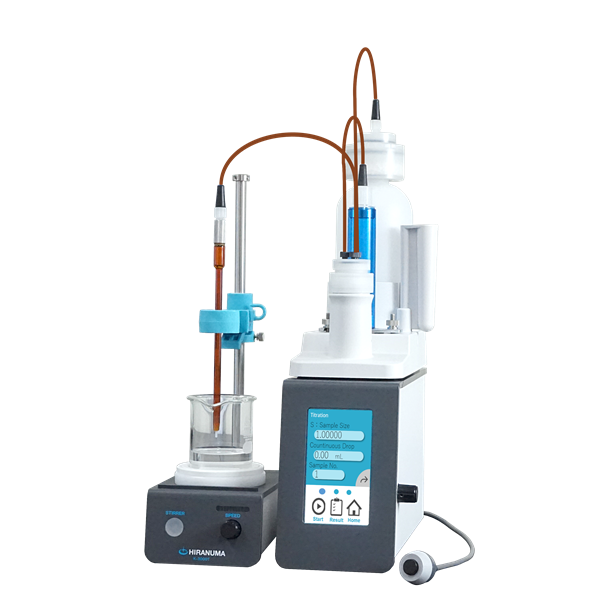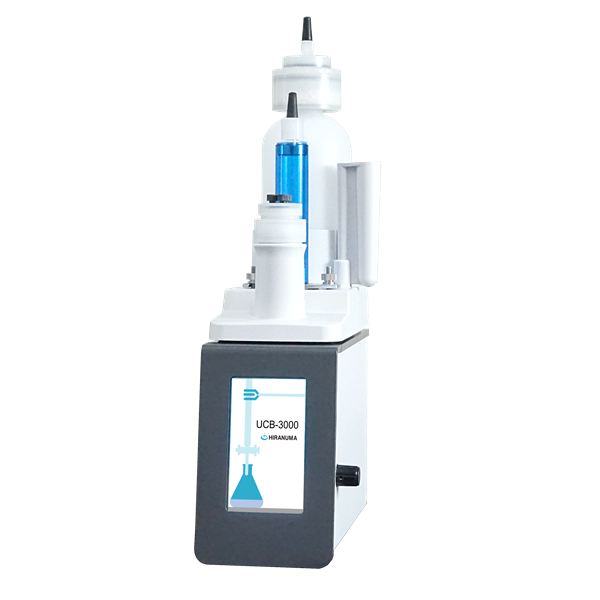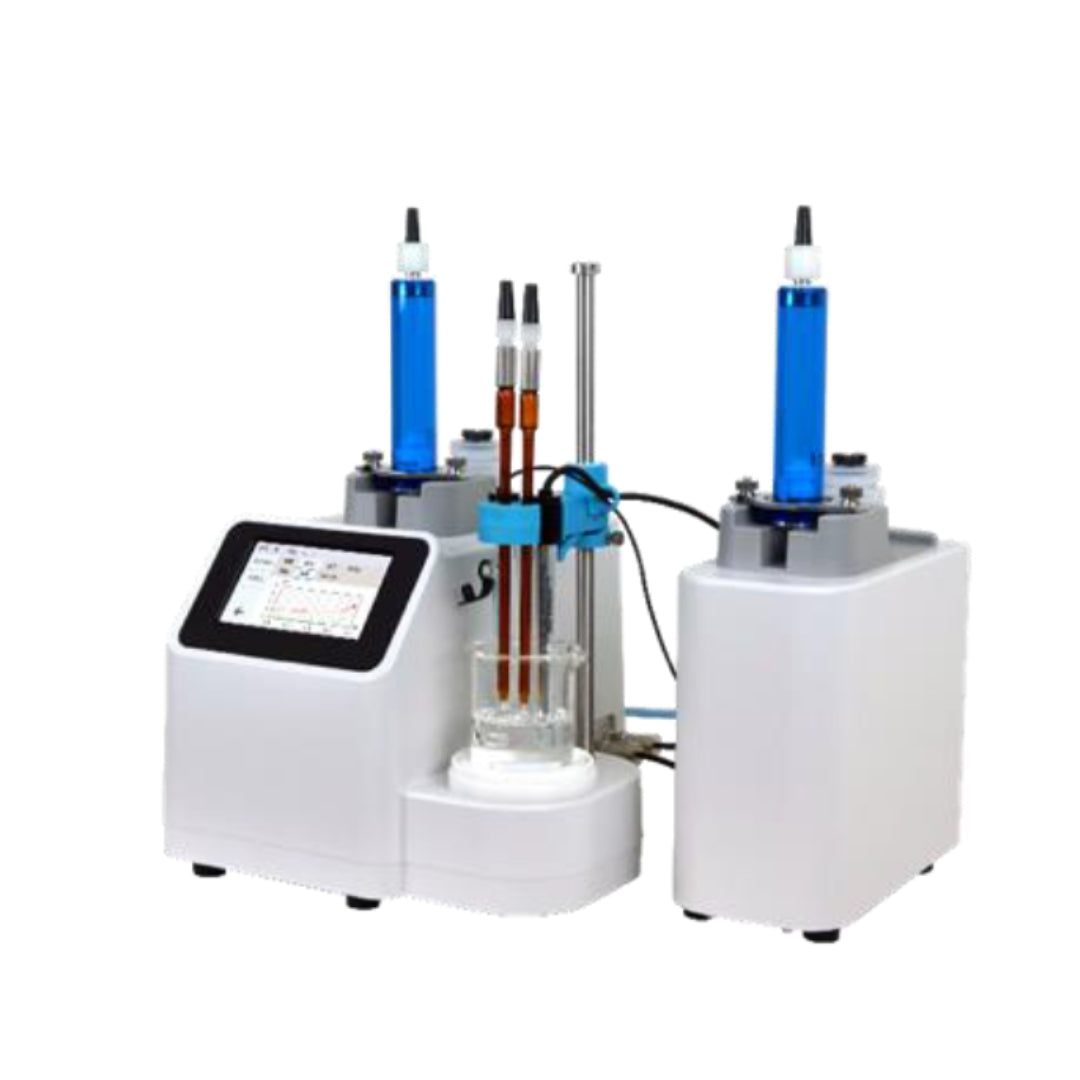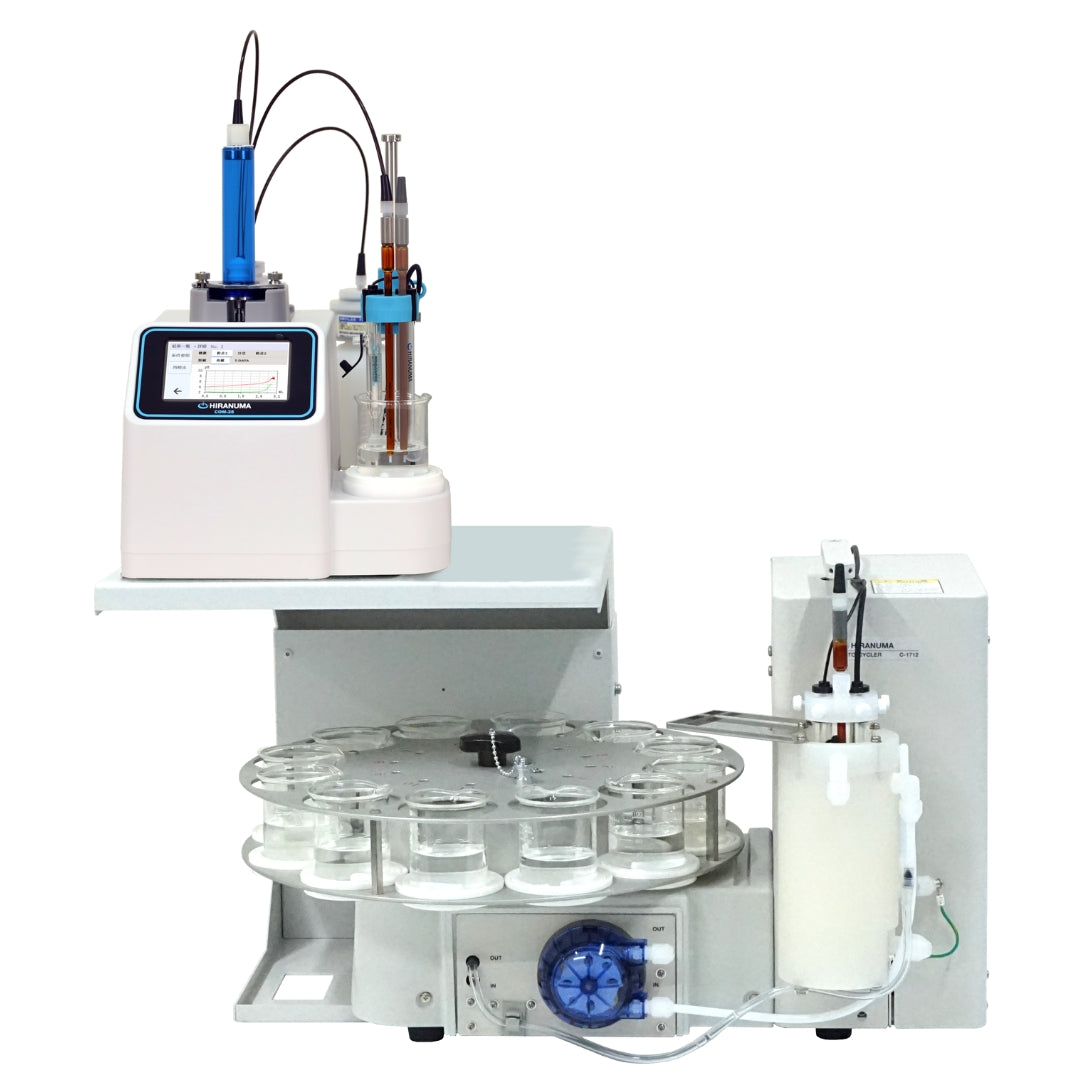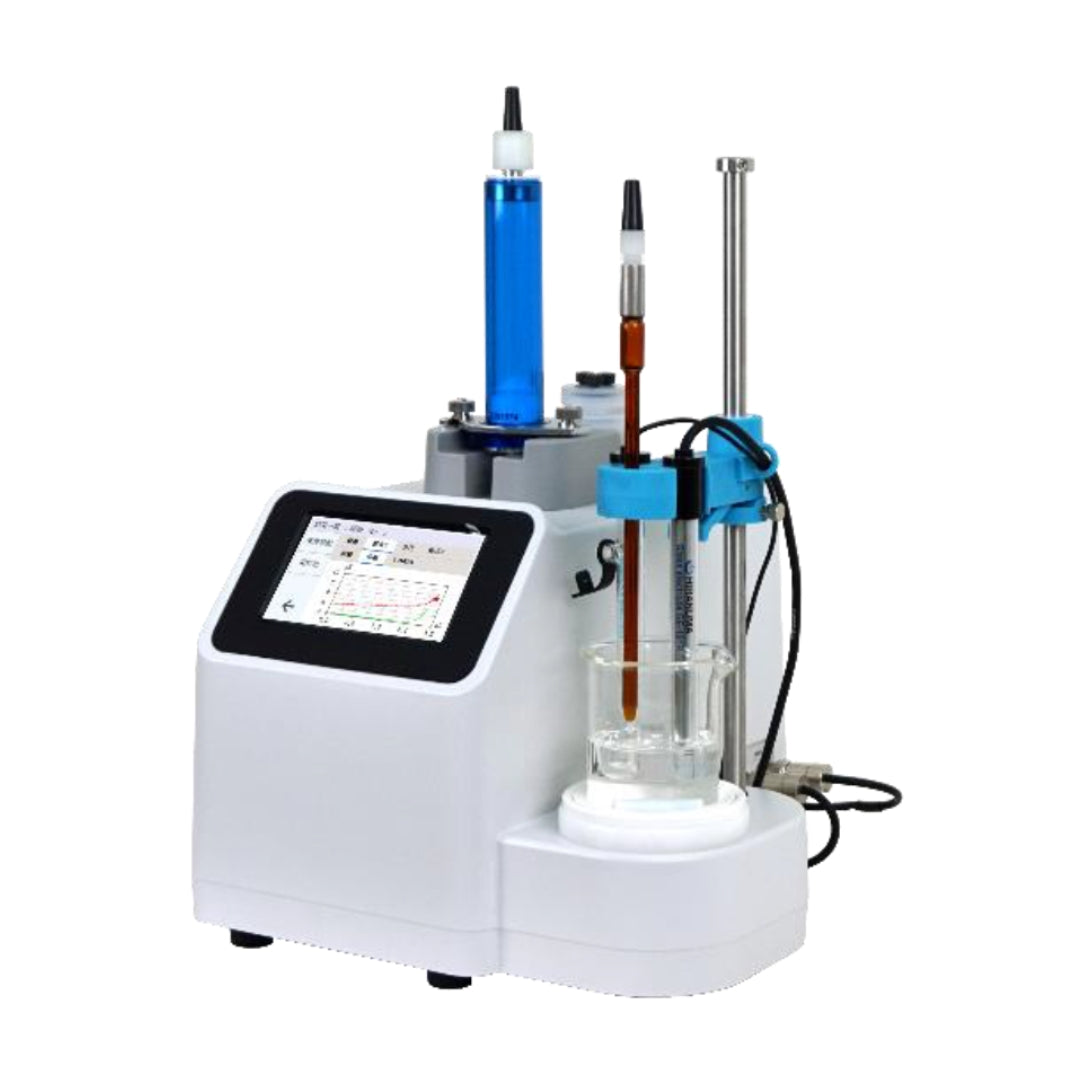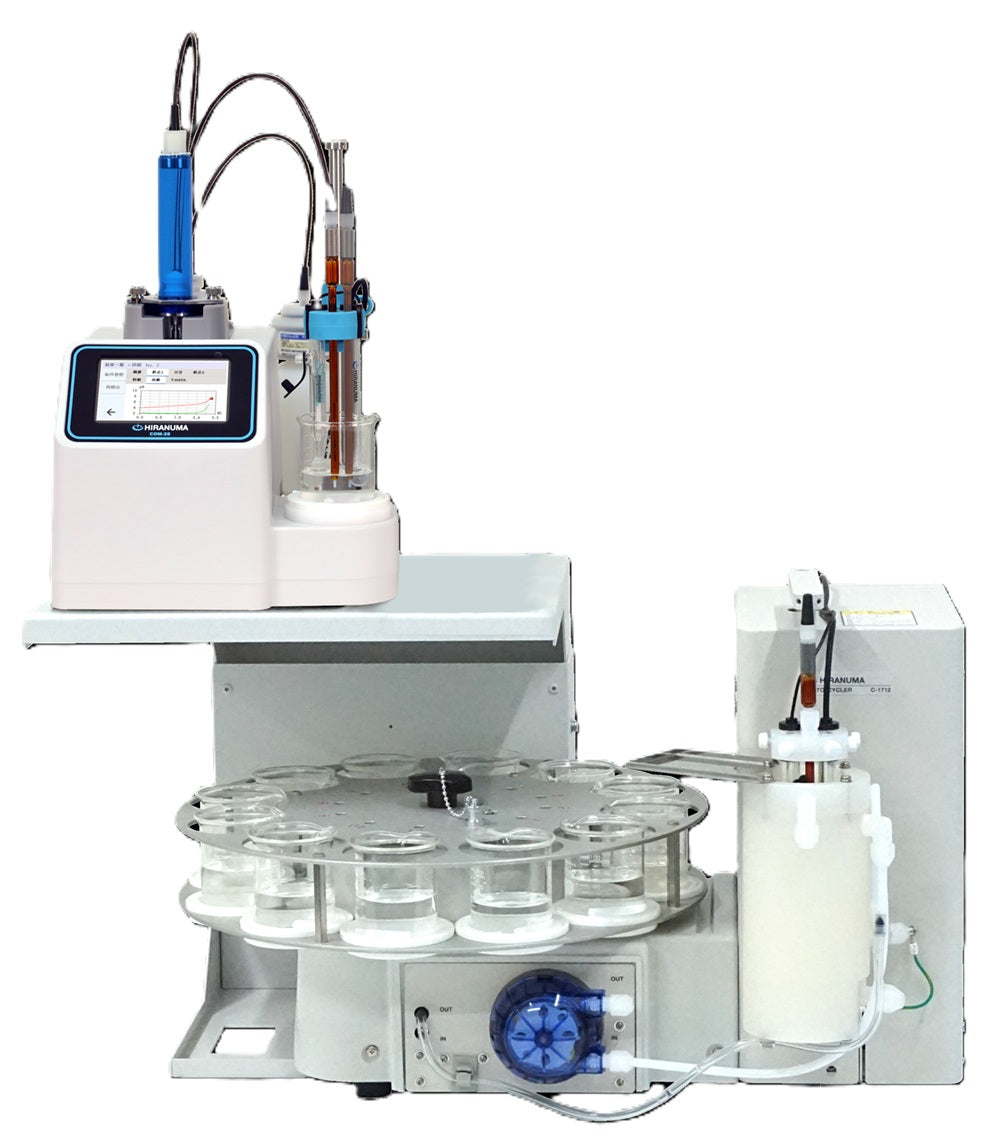| HIRANUMA APPLICATION DATA | Automatic Titrator | Data No. | D4 | Nov. 14,2018 |
| Environment | Determination of residual chlorine in tap water |
1. Abstract
Tap water chlorinated from lake water and river water contains residual chlorine. The residual chlorine is sometimes called available chlorine, which is composed of free residual chlorine and combined residual chlorine.
| Residual chlorine (Available chlorine) |
 |
Free residual chlorine (Cl₂, HClO, ClO⁻) |
| Combined residual chlorine (NH₂Cl, NHCl₂, NHCl₃, …Chloramine) |
Standard Methods for the Examination of Water adopts the following methods as determination method for residual chlorine.
・Dimethyl -p- phenylenediamine (DPD) method ………………………………………………Colorimetric method
・Dimethyl -p- phenylenediamine (DPD) titration method………………………………………Titration method
・Amperometric titration method (Titration method with phenylarsenoxide solution) ………Titration method
・Iodometric titration method………………………………………………………………………Titration method
This report introduces an example for determination of residual chlorine in tap water with iodometric titration method. Residual chlorine oxidizes potassium iodide in acidic solution to generate free iodine.
| Cl₂ + 2I⁻ → I₂ + 2Cl⁻ |
The generate iodine is potentiometrically titrated with sodium thiosulfate standard solution.
| I₂ + 2Na₂S₂O₃ → 2NaI + Na₂S₄O₆ |
2. Configuration of instruments and Reagents
| (1) | Configuration of instruments | ||
| Main unit | : | Hiranuma Automatic Titrator COM series | |
| Electrode | : | Platinum electrode PT-301 Reference electrode RE-201Z *Instead of above electrodes, the following electrodes are useable. ・PR-701BZ (Platinum reference combination electrode) ・ Combination of PT-301 (Platinum Electrode) and GR-501BZ (Glass reference electrode) |
|
| (2) | Reagents | ||
| Titrant | : | 0.01 mol/L Sodium thiosulfate standard solution | |
| Additive solution | : | Diluted sulfuric acid (1:5, v/v) | |
| Additive reagent | : | Potassium iodide | |
3. Measurement procedure
| (1) | Dispense 500 mL of sample into a 500 mL beaker with graduated cylinder. |
| (2) | Add 1 g of potassium iodide and 5 mL of diluted sulfuric acid. |
| (3) | Immerse electrodes and start titration with 0.01 mol/L sodium thiosulfate standard solution. |
4. Measurement conditions and results
Examples of titration conditions

Measurement results
| Number of measurement |
Size (mL) |
Titrant volume(mL) |
Concentration (mg/L) |
|---|---|---|---|
| 1 | 500 | 0.772 | 0.551 |
| 2 | 500 | 0.773 | 0.552 |
| 3 | 500 | 0.755 | 0.539 |
| 4 | 500 | 0.771 | 0.550 |
| 5 | 500 | 0.772 | 0.551 |
| Statistic calculation |
Avg. | 0.549 mg/L | |
| SD | 0.0054 mg/L | ||
| RSD | 0.98 % | ||
Example of titration curve

5. Note
Potentiometric titration with platinum electrode is introduced in this report instead of using starch solution as indicator for endpoint detection. While the detection method with starch indicator is likely to cause individual error due to visual judgment, the potentiometric titration automatically detects the maximum change point in potential, can perform measurement with less individual error. Determination limit is estimated to about 0.1 mg/L.
Please note that the sum of free residual chlorine and combined residual chlorine is determined on this method. When performing separated titration, the measurement with DPD method or amperometric titration method are required.
Keywords: Tap water, Residual chlorine, Standard Methods for the Examination of Water, Platinum electrode
*Some measurement would not be possible depending on optional configuration of system.


